Terrorist groups and organisations around the world

An outline of current terrorist groups by geographical classification.
Previous writings have theorised about the terrorist phenomenon, tracing its history and evolution, listing and explaining the different motivations that lead certain groups and even states to engage in terrorist violence. In both works, the names of various groups that have carried out terrorist activities throughout history have been brought to light.
To list all the groups that have resorted to terrorism at one time or another would be an enormous task, so it is necessary to limit the list.
Again taking Rapoport's wave theory as a reference, the intention is to focus on the main terrorist groups that have operated during the third and fourth waves, as they are the closest in time and the most similar in their form of action to the current concept of terrorism.
In order to make the presentation clearer, they have been grouped by geographical area.
From the end of World War II to the present day, there is not a single European country that has not suffered to a greater or lesser extent from the scourge of terrorism. This does not mean that these attacks have been perpetrated by indigenous groups, although on the other hand, at one time or another and with a more or less prolonged activity over time, almost every country has seen the appearance of a group of this type.
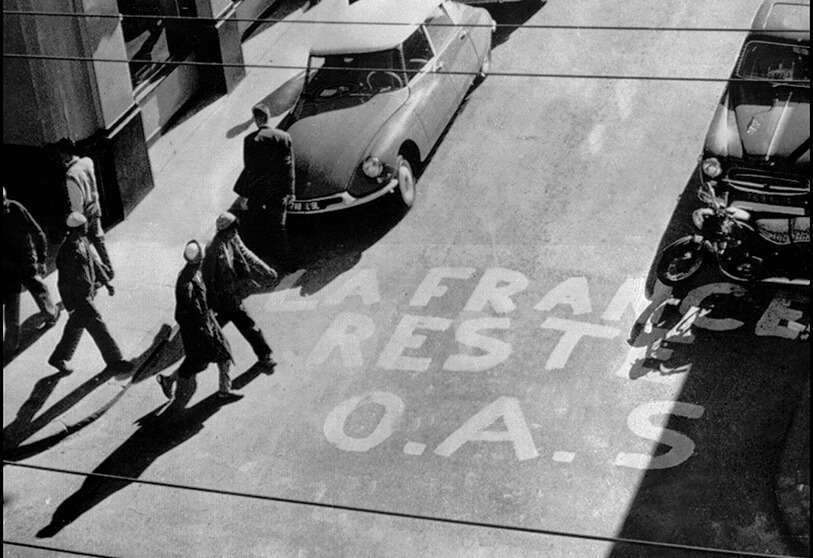
OAS (Organisation Armée Secrète): This was a dissident paramilitary group with an extreme right-wing ideology that emerged during the Algerian war (1954-1962). Its aim was to prevent Algeria from gaining independence from France by committing assassinations and all kinds of attacks. Its motto was L’Algérie est française et le restera ("Algeria is French and will remain so"). This group is peculiar for many reasons. It is a group that belongs, in terms of time, to the third wave or "Wave of the New Left", but the motivation of their struggle corresponded to the previous wave, the "Anti-Colonial Wave", only this one was directed in the opposite direction, i.e. they were fighting against independence. As can be seen, this is a very particular example.
The OAS was formed on the basis of existing networks of fighters who had already carried out attacks against elements of the Algerian National Liberation Front and those who supported it since the beginning of the war. These networks called themselves "counter-terrorists", "self-defence groups" or "resistance".
Contrary to popular belief, it was a heterogeneous organisation, which included clearly fascist sectors and those nostalgic for Vichy France.
In Algeria, leadership was in the hands of military officers and politicians who had been in the Resistance, and presented themselves as continuing the struggle against Nazism. The militancy was made up of deserters from the army, especially veterans of the colonial wars, and generally modest people, such as shopkeepers, artisans, small employees, etc. Its main stronghold, the Bab-el-Oued district of Algiers, had had a majority communist and socialist vote.
It officially made itself known in Madrid in January 1961, announcing itself as a response by certain French politicians and army officers to the independence referendum held on January 8 and organised by General de Gaulle.
Their actions, initially selective, became increasingly indiscriminate acts of terror, with bombings and assassinations both in French Algeria and in metropolitan France killing more than 2,000 people between April 1961 and April 1962. This terrorist campaign culminated in a wave of attacks that followed the "Evian Accords". Following the Evian Accords, the OAS intensified its violent campaign targeting Muslims, European supporters of General de Gaulle and members of the special police groups deployed to dismantle them. During this period, their primary objective was to prevent the referendum on self-determination, something they failed to do, as public opinion in France was overwhelmingly opposed to continuing the war and supported Algerian independence.
After independence was granted on 5 July 1962, the OAS ceased to operate in Algeria and most of its members went into exile in the south of France, while its leaders escaped abroad, where they remained until the 1968 amnesty. Many of them, such as Pierre Lagaillarde, Jacques Soustelle, Jean Gardés, AlinSarrien and Raoul Salan took refuge in Spain, as did some 700 militants and their families. After Algerian independence, small groups tried to keep up the struggle, focusing on attempts to assassinate Charles de Gaulle, such as the one that took place in the Paris suburb of Le Petit-Clamart in 1962. Their activity lasted little more than a year.
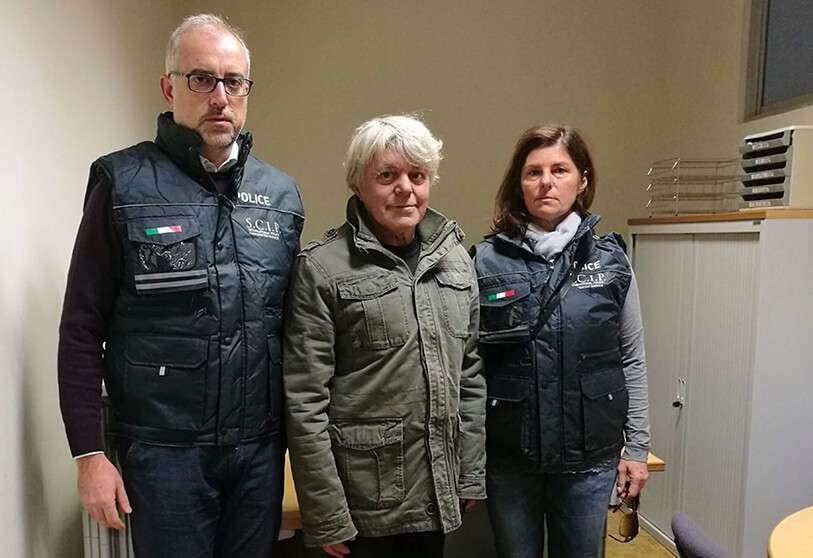
Ordine Nuovo (New Order): Cultural and political extra-parliamentary organisation of the extreme right. Born in 1956 as an attempt to revive the Fascist party banned by the constitution implemented after World War II. In 1973 the Italian government forced its dissolution. Residual elements formed a new group under the name "Ordine Nero" in 1974.
The original group, considered the most important extreme right-wing group to emerge in Italy after the Second World War, perpetrated several attacks, some of them particularly significant for the number of victims caused, such as the 1970 bomb explosion in Milan's Piazza Fontana which killed 17 people and injured more than 80, or the one placed on the train travelling between Rome and Messina, killing six people and injuring 100.
As can be seen from their actions, despite being a group with an extreme right-wing ideology, they employed the tactics most deeply rooted in the anarchist tradition of the last period, targeting the entire sector of the population they considered to be opposed to their ideas and seeking indiscriminate terror.
As a summary and example of their special idiosyncrasy, we reproduce one of the organisation's communiqués: "We want to show the nation that we can plant our bombs wherever we want, whenever we want and however we want. We will meet in autumn; we will bury democracy under a mountain of corpses".
NAR (NucleiArmatiRivoluzionari): The NAR was another neo-fascist organisation active in Italy between 1977 and 1981.
The second half of the 1970s in Italy was marked by unusual violence between factions of different political persuasions. In response to left-wing movements and the activity of Marxist terrorist groups, some elements of the extreme right moved from street clashes to terrorist actions. The main characteristic of these organisations was the desire to fight and the "spontaneity" they showed for a cause even though they knew it was a lost cause. The struggle itself was an end in itself, which they put before political objectives. During their period of activity they committed 33 murders and planned to kill Francesco Cossiga, Gianfranco Fini and Adolfo Urso. In the modus operandi of this group, a distinctive sign of modern-day terrorism and especially of jihadist terrorism clearly appears for the first time, which is collaboration and cooperation with organised crime groups, in this case with the "Banda della Magliana", a criminal organisation in Rome.
Red Brigades: Emerging in 1970 at the height of the "New Left", this group sought to establish a revolutionary state through armed struggle and to force Italy out of NATO. Its activity began with protest actions in factories and production centres and gradually evolved, increasing the forcefulness and violence of its actions until it took the path of terrorism. It continued until the beginning of the 1980s, committing all kinds of attacks. Its model was the partisan resistance movement that fought during World War II. A minority of young anti-fascists took them as an example of the legitimacy of using violent methods to achieve a just goal.

They went on to establish six main elements or columns in different cities around the country, each operating autonomously.
Their structure became increasingly complex and they even created a logistical front. They were pioneers in the use of techniques such as express kidnapping, a way of punishing businessmen and giving themselves publicity. In the same way that this form of action was borrowed from some South American guerrilla groups, they also imported a type of action called "gambizzazione", used by the IRA, which consisted of wounding hostages by shooting them in the leg. It was at this point that political assassinations began to be considered as a form of armed struggle, which led to dissension within the gang.
The most relevant and well-known event took place in 1978 when former Prime Minister and leader of the Christian Democrat party, Aldo Moro, was kidnapped. At the time of the kidnapping he had just achieved an agreement of national union between Christian Democracy and the Communist Party of Italy (called CompromessoStorico) which, however, had many detractors both inside and outside Italy.
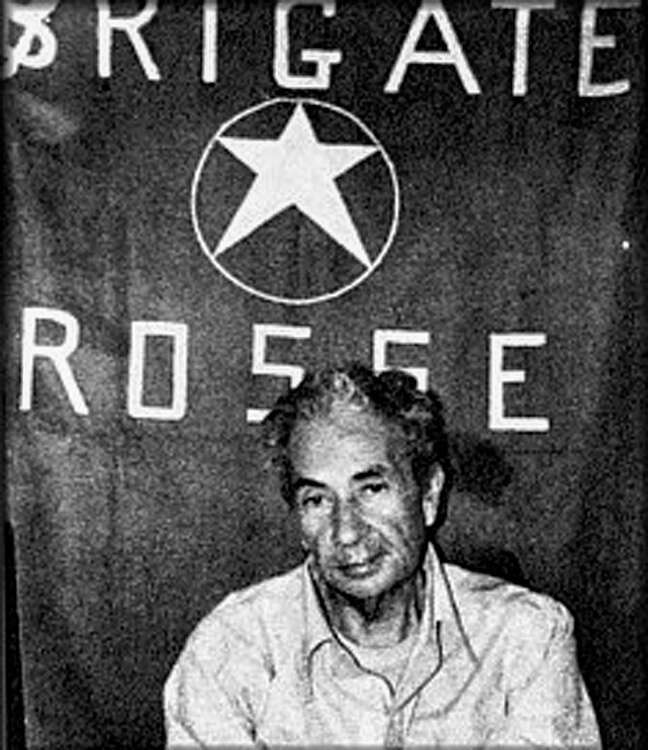
During the kidnapping, five members of the bodyguard were killed. Almost two months later, after unsuccessful attempts at negotiation and even the mediation of Pope Paul VI at the request of Aldo Moro himself, the Christian-Democratic leader was assassinated.
This attack shocked the whole country and led to the introduction of much tougher anti-terrorist laws and measures, marking the beginning of the end of the gang, which was practically dismantled in 1980.
However, some elements who were not captured took over and continued the armed struggle with sporadic actions and even under various new names until the end of 1989.
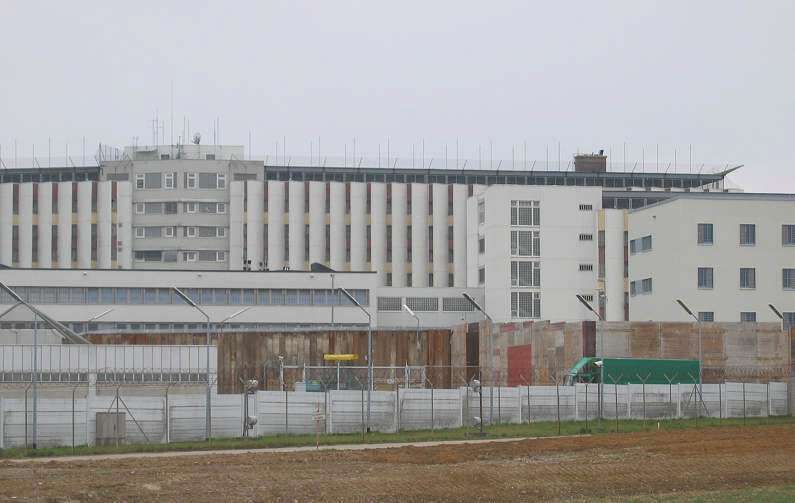
The Red Army Faction (RAF) (BaaderMeinhoff): This was one of the most active revolutionary terrorist organisations in West Germany and certainly the one with the most media coverage. During its activity it was responsible for at least 34 murders. It was a Marxist-inspired group. It can be seen as a characteristic example of the third wave of terrorism or "New Left Wave". It claimed to be a resistance group that aspired to employ urban guerrilla tactics modelled on South American groups such as the Uruguayan Tupamaros; they saw their struggle as a way of fighting the system, capitalism and US imperialism in an international struggle for liberation. It operated between the 1970s and 1998. Autumn 1977 marked the high point in the history of this group, with actions that provoked a real national crisis.
Acts of police brutality during various protests in the late 1960s, coupled with widespread rejection of the Vietnam War, prompted Thorwald Proll, Horst Söhnlein, Gudrun Ensslin and Andreas Baader, along with others, to join forces and set fire to several German shops. They were arrested on 2 April 1968, and during their trial, the journalist Ulrike Meinhof published several articles on their behalf in the political magazine Konkret.
Some members of the gang were sentenced to prison, Andreas Baader among them. As a result of a period of recruitment and indoctrination, the journalist helped him escape. From then on, they became known as the Baader-Meinhoff gang. Some of the members travelled to an Al-Fatah camp in Amman, Jordan, via Beirut to receive training (something very characteristic of terrorist groups during this period). On their return, other members followed in their footsteps.
When they all met again in West Germany, they began what they called an "anti-imperialist struggle", consisting of bank robberies to raise money and weapons, attacks on US military buildings, police stations and buildings belonging to Axel Springer's newspaper empire, as well as the attempted assassination of a judge.
The group went through various vicissitudes and phases, with almost twenty of its members dying in various circumstances. They were pioneers in collaboration with Arab terrorist groups and in what was called the "internationalisation" of terrorism, a clear example being the participation of the terrorist "Carlos" in the hostage-taking at the OPEC headquarters in Vienna in 1975 or the hijacking of a plane by a commando of Arabs under the pretense of negotiating the release of Baader-Meinhoff members imprisoned in Germany.
In April 1998 the band officially disbanded.
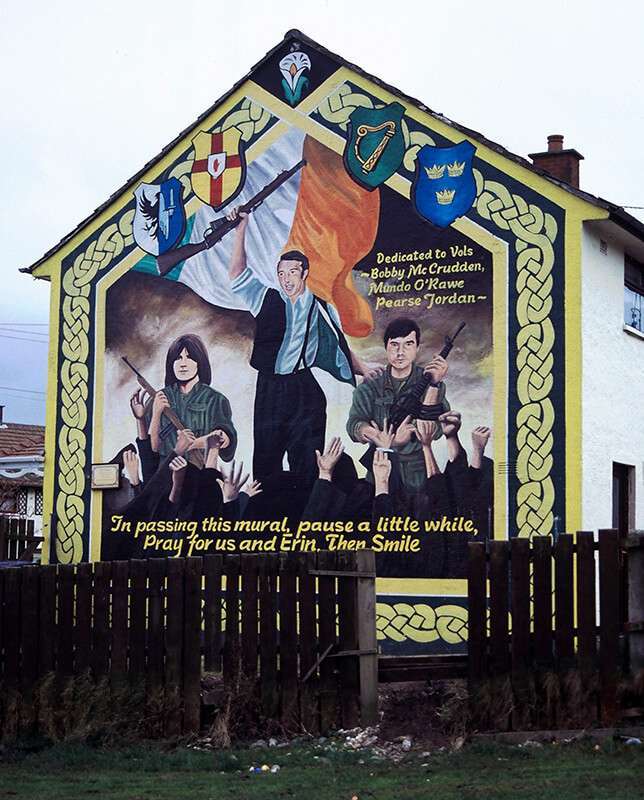
Irish Republican Army (IRA): The IRA is probably the longest-running terrorist group in Europe. Its aim is to achieve a sovereign state independent of the United Kingdom, geographically consisting of the Island of Ireland including those counties that are now part of Northern Ireland.
Various armed groups and paramilitary groups use or have used the name Irish Republican Army, all claiming to be heirs of the Original IRA or "Old IRA", the army of the Republic of Ireland, proclaimed by parliament or DáilÉireann in 1919.
The name IRA first appeared during the Battle of Ridgeway (2 June 1866). From that time onwards, the Fenians organised themselves into IRA regiments.
By 1960, after a disastrous "campaign of border violence", Sinn Féin, the political arm of the armed organisation, in a turn in line with the times and seeking the support of one of the two warring blocs, changed its orientation from the war for the republic to Marxist class warfare. With the advent of the era of revolt known as "The Troubles", the Official IRA/Official Sinn Féin (as it became known after the formation of the Provisional IRA and Provisional Sinn Féin) was sidelined by its reluctance or inability to defend the Catholic areas of "The Six Counties" from Protestant groups.
Eventually, the Official IRA faded away, its political wing discarded its nationalist component and became Sinn Féin Workers' Party, although most of its members eventually left to form the Democratic Left, the most left-wing party in the republic's parliament.
After a ceasefire in 1972, the Official IRA and Official Sinn Féin split again, leading to the formation of the ultra-left Irish National Liberation Army (INLA) and the Irish Republican Socialist Party,
The INLA became notorious for its numerous internal clashes and some of the most sectarian murders perpetrated by nationalists.
The more traditionalist republicans founded the Provisional IRA/Sinn Féin Provisional, which operated primarily in Northern Ireland, using violence against both Unionists and the British, although they also murdered a number of Irish soldiers and members of the Garda Síochána (the Irish police). In 1986, secession was again led by senior members of Provisional Sinn Féin in the South (as the political arm of the Provisional IRA used to be called).
The deposed members, who embodied a hard republican line and opposed Provisional Sinn Féin abandoning its policy of abstentionism and taking its seats in the Irish Parliament, founded a rival party and paramilitary organisation which they called Republican Sinn Féin and Continuity IRA. Those members of various factions who did not accept the peace process split off to form groups such as the Authentic IRA. The Provisional IRA/Sinn Féin Provisional (better known simply as Sinn Féin and the IRA), meanwhile, moved towards a less militaristic and more political stance that would later contribute to the Hume-Adams Report and the peace process. On 28 July 2005 the IRA announced the cessation of armed struggle.
The IRA is a unique example of a terrorist organisation that has adapted to the currents of the times, seeking to gain as much support and sustenance as possible while keeping intact the objective that led to its birth. During its long history and due to its origins, it came to act like an army, with iron discipline, a very hierarchical structure and even complex attacks not only against the police, but also against British military units, and even attempting to assassinate Prime Minister Margaret Thatcher. It is undoubtedly the most lethal group, having caused more than 2,000 deaths among police, civilians and military personnel. By 2001, the Irish conflict had left a total death toll of more than 3,500.

ETA: Terrorist organisation that emerged in the Basque Country with two main objectives: the independence of what they called Euskal Herria, an area comprising the three Spanish Basque provinces, Navarre and the French Basque Country, from Spain and France, and the establishment of a socialist state there.
Euskadi Ta Askatasuna was formed in 1958. Its first action was the derailment of a train carrying ex-combatants of the Civil War bound for San Sebastian on 17 July 1961.
On 7 June 1968, ETA's first assassination took place: that of the civil guard José Antonio Pardines Arcay, at a roadblock. On 2 August, two months later, ETA committed its first premeditated attack: the assassination of Melitón Manzanas, head of the secret police in San Sebastián.
During this first period, they even assassinated the President of the Government, Admiral Carrero Blanco.
After the transition, ETA considered that with the post-1978 constitutional system, things had not changed substantially, as it considered the nascent democracy to be a continuation of the previous regime. In 1978, strengthened by the union of the Berezis, a militarist split from ETA-pm (political-military), ETA-m (military) changed its strategy and adopted what was known as "negotiation" or "war of attrition", which consisted of assassinating members of the army and the State Security Forces and Corps in order to put pressure on the government. In order not to leave the political field open to ETA-pm, it supported the creation of the Herri Batasuna (HB) coalition.
Terrorist attacks increased in number and intensity. In 1985 they used a car bomb for the first time, a technique that they perfected and used more and more.
The attacks increased in number and violence, becoming more and more indiscriminate. At the same time, the gang's strict internal discipline punished any dissidence with the utmost harshness.
With the intensification of the actions and the increase in the number of victims, the gang began to lose the necessary popular support. This circumstance, together with police successes and the creation of a united political front, managed to limit the group's operability until, after several unilateral ceasefire declarations and a truce, in 2011 it announced the definitive cessation of the armed struggle and in 2017 total disarmament and disbandment.
Grupo de Resistencia Antifascista Primero de Octubre (GRAPO): Spanish terrorist organisation born in Vigo in 1975 with the aim of establishing a "popular and federative republic" in Spain.
Its origins date back to 1968, with the birth in Paris of the Marxist-Leninist Organisation of Spain (OMLE). A splinter group of the Communist Party of Spain (PCE) that accused not only the PCE, but also the USSR and the parties that supported it, of being "revisionist". The OMLE dissolved itself during its 1st Congress in 1975, giving rise to the PCE(r) and its armed wing: the GRAPO.
The first armed action by the GRAPO took place on 2 August 1975, at the Madrid racetrack, when they attacked two Civil Guard officers, killing one of them and seriously wounding his companion. A few days after the attack on August 2, another terrorist action was perpetrated, this time in Barcelona, subsequently killing an Armed Police officer on September 29, 1975.
The attack that gave its name to the gang took place just two days later, on 1 October 1975, against four members of the Armed Police in Madrid.
After Franco's death, the GRAPO continued their armed activity by carrying out increasingly violent terrorist actions.
In those early years of the Transition, the GRAPO committed kidnappings and attacks with strong social repercussions. The 1976 amnesty and the police coups turned the PCE(r) into a residual and very minority group. The GRAPO sporadically maintained its armed actions despite the fact that the organisation was dismantled on several occasions. Only a few militants continued to plant explosives, commit robberies and extort businessmen, with practically no social support. In the course of their history, they have murdered more than 25 people, most of them policemen and soldiers.
After an intense campaign during 1984, the new GRAPO reorganisation was thwarted on 18 January 1985, when 18 people were arrested in an extensive operation in various Spanish cities. On January 21 of the same year, practically all but a couple of the remaining active GRAPO members were arrested. Since then, some actions claimed by the group have occurred sporadically, more related to common criminal activities with the aim of obtaining economic benefit than to terrorism.
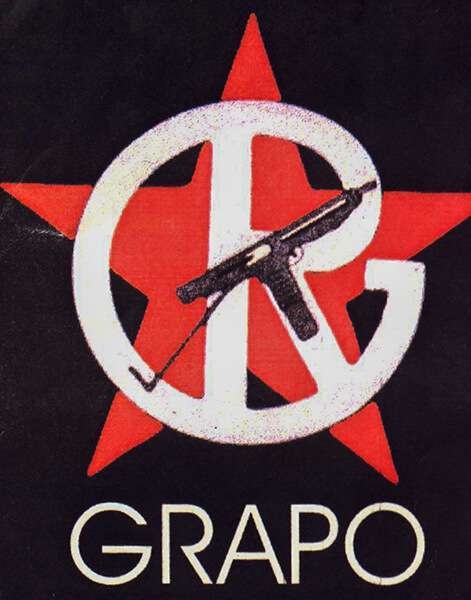
From the mid-1960s onwards, South and Central America became a hotbed of terrorist groups, mainly Marxist in ideology. The area became a key part of the game board between the two blocs during the Cold War.
Most of these groups started out as "simple" terrorist elements and evolved naturally into full-fledged insurgent movements. In many cases, they became small armies that seriously challenged the authority of states, often threatening their very existence. At the same time, a hitherto unheard of phenomenon began to emerge: collaboration with criminal organisations with which they shared certain interests, mainly to increase their funding possibilities. This aspect, the collaboration, if not integration, of terrorist movements with organised crime networks, is a phenomenon that is occurring more frequently nowadays and was dealt with a few months ago in a specific article.

Shining Path: Its official name is the Communist Party of Peru - Shining Path (Sendero Luminoso in Spanish). Guerrilla organisation of Marxist, Leninist and Maoist ideological tendency originated in Peru.
Its slogan was "On the luminous path of Mariátegui". The goal of the Shining Path was to replace the Peruvian institutions, which they considered bourgeois, with a revolutionary peasant-communist regime, presumably initiated through the Maoist concept of New Democracy.
It was founded in the late 1960s by the then philosophy professor Abimael Guzman.
In the 1980 elections Shining Path was one of the few left-wing groups that did not take part, choosing instead to launch an armed struggle in the northern provinces of the department of Ayacucho.
It began its terrorist activity and evolved, as is characteristic of the groups that emerged in this part of the world, into a subversive and guerrilla movement. In fact, these are phases of the revolutionary process which both leftist and nationalist or pro-independence groups tried to follow in order to achieve either the establishment of a socialist regime or independence, although the latter generally sought both, independence and the establishment of revolutionary socialism.
The increase in activity and its transformation into a guerrilla movement unleashed a "People's War" in which terror was the main agent until the capture of its leader, Abimael Guzmán Reynoso in 1992, after which it has had only sporadic actions.
This group was characterised by its extreme brutality, which included violence against peasants, trade union leaders, popularly elected authorities, as well as attacks on private property and national infrastructure (blowing up pylons, destruction with explosives of roads, bridges, railways, refineries, etc.), the civilian population, police and military personnel in general.
Between 31,331 and 37,840 deaths are attributed to him.
At the time of the "People's War" and terror, the Shining Path came to control large parts of the country and even managed to take control of cities such as Jauja, Yurimaguas, Juliaca and Tingo María, as well as several districts (in Ayacucho, Apurímac and Huancavelica). In these territories, he implanted a proto-state regime whose main goal was to replace the then weak national state. This type of attitude has been reproduced today by groups such as Daesh or Al-Qaeda, which take advantage of the power vacuum or lack of state presence in certain depressed areas to take its place and thus ensure that the population sees them as its legitimate rulers. In the territories it controlled, the organisation called itself the People's Republic of Peru or the People's Republic of New Democracy.
Finally, in December 1993, Abimael Guzmán and 17 Shining Path leaders signed the peace agreement, read by Alberto Fujimori on 1 October 1993 at the UN.

Fuerzas Armadas Revolucionarias de Colombia (Revolutionary Armed Forces of Colombia): A terrorist, insurgent and guerrilla organisation of the extreme left, with a Marxist-Leninist ideological base.
The FARC was founded after the Colombian army's 1964 offensive against the "Republic of Marquetalia", one of the autonomous communities created by communist armed self-defence groups, in order to reassert the authority of the so-called National Front. Until the 1980s, the FARC grew relatively slowly.
The FARC then numbered between 1,000 and 3,000 men. At the Seventh Conference from 4 to 14 May 1982, under the command of the political leader "Jacobo Arenas", several new strategic guidelines were set out and the principle of the "combination of all forms of struggle" - political and armed struggle - was reaffirmed.
From that moment on, the FARC called itself the "People's Army" (FARC-EP) and proposed a policy of splitting fronts, with the aim of doubling the number of members and setting dates for a future effective seizure of power in the 1990s.
It also rejected any link with the emerging phenomenon of drug trafficking and drug crops. Gradually, however, during the late 1980s, it ended up being accepted, because it became a growing and very lucrative activity in the countryside. The collection of taxes from producers and drug traffickers was established as a source of financing, through the so-called "gramaje". This pattern of initial acceptance of coexistence with criminal activities and their exploitation or even collaboration with them is also repeated in the jihadist groups that currently operate mainly in the Sahel, taking advantage of the fact that the area is a real "hub" for all kinds of illicit trafficking.
On 28 March 1984, following a meeting of the leaders of the 27 fronts and the General Staff, a ceasefire was established as part of the agreements signed with the government of Belisario Betancourt ("Ceasefire, Truce and Peace Agreements", known as the Uribe Agreements). The FARC formed the Patriotic Union (UP) to lead the political movement.
This negotiation attempt failed largely due to two elements: violations of the ceasefire by both parties, and political violence by sectors of the extreme right.
Drug traffickers, later also in a frontal war against the state to prevent the possible extradition of their members to the United States, decided to take revenge against the guerrillas and peasant sympathisers, financing private hit squads from their own groups of hired assassins, including the participation of associations of cattle ranchers and rural landowners (landowners), and counting on the collaboration of several members of the Colombian army.
Directly or indirectly, they constitute the beginnings of the groups currently known as self-defence or paramilitary groups (which, from 1997, would unite around the AUC).
In 1987, a group was formed with the aim of unifying the actions of various guerrilla organisations in Colombia. It lasted from 1987 until the early 1990s. It was made up of the FARC, the ELN, the EPL, the M-19, the Partido Revolucionario de los Trabajadores and the Movimiento Armado Quintín Lame. Subsequently, the FARC and ELN withdrew from the Coordinating Committee to continue the armed struggle separately.
At the beginning of the 1990s, the FARC had between 7,000 and 10,000 fighters, organised in 70 fronts throughout the country.
Since then, the number of fighters has been growing.
Successive governments tried to put an end to the insurgency through large-scale military operations and peace negotiations.
Several attempts failed until 2016 when the Havana Agreements were signed, which ended the guerrilla's conflict with the government, dissolving them as an armed organisation and transforming them into a political party.

Ejército de Liberación Nacional (ELN): extreme left-wing insurgent guerrilla organisation operating in Colombia. It defines itself as Marxist-Leninist and pro-Cuban revolution. It has been an actor in the Colombian armed conflict since its formation in 1964.
The ELN's ideology includes the use of armed struggle to denounce and promote the solution of the social needs of the population in the face of national and international exploitation. It aims to point out failures and injustices within a regime that they consider undemocratic.
Its guerrilla status in the 1970s and 1980s is part of the growth of Liberation Theology; its members consider Camilo Torres Restrepo, a priest, sociologist and pioneer of this theology, to be one of its precursors, within a "Marxist-Christian" interpretation. The ELN received foundational support from Catholic socialist priests who became active guerrilla fighters.
Basically the group followed the same vicissitudes as the FARC, with the difference that this group has not ceased its terrorist activity. On the contrary, it could be said to be an example of what has previously been described as the diplomacy of terrorism, in this case used by the Bolivarian government of Venezuela to destabilise its neighbouring country which it considers hostile to its interests.

The third wave of terrorism was characterised by the emergence of a large number of terrorist groups originating in the Middle East. Initially, these groups were not religiously motivated, although it was to some extent a unifying element. The evolution towards religion as a motivating element was a gradual process and eventually led to the fourth wave and groups such as Daesh and Al-Qaeda. However, some groups that emerged at that time and place are still active although their original motivations have changed, at least in part.
The recurrent origin of all these groups, or most of them to be more precise, was in the struggle of the Palestinian people, and their actions were mainly directed against Western or American interests, most of them on European soil. The Eastern bloc took advantage of these circumstances to inoculate them with its ideology and use them as a weapon in its struggle against the Western bloc. In the same way that some countries have used and continue to use the groups that have emerged on their territory as elements of external action.
The following list mentions the most important or active ones, but without grouping them by country in the previous points, and does not include the two main groups of the fourth wave, as they deserve an individualised study and that is not the purpose of this presentation.
Popular Front for the Liberation of Palestine (PFLP): A secular Marxist-Leninist revolutionary organisation founded in 1967 by George Habash. It is the second largest organisation in the Palestine Liberation Organisation (PLO) after Fatah.
In early 1968 it numbered between 1,000 and 3,000 fighters. Its headquarters were located in Syria, where its financial support came from, and one of its training camps was located in Jordan. In 1969 the PFLP declared itself a Marxist-Leninist organisation, though without abandoning pan-Arabism, since it saw the Palestinian conflict as part of a wider uprising against Western imperialism. This reinforces the theory of manipulation by the Eastern countries or the assumption of such an ideology in order to gain their support. The support of the USSR and its allies for the Palestinian cause was public and notorious.
PFLP members are secular Palestinians and fear an Islamic state as proposed by Hamas and Islamic Jihad. Palestinian Christians have always been involved in militant organisations, but the PFLP was the first with Christian leading members.
Its actions between the 1960s and the mid-1970s were very spectacular and focused on hijacking or attacking aircraft.
Members of this group under the cover of the name Black September were responsible for the bombings during the Munich Olympics in 1972.
The group is still active today within the complex ecosystem of the Palestinian world and its various organisations with their infighting.
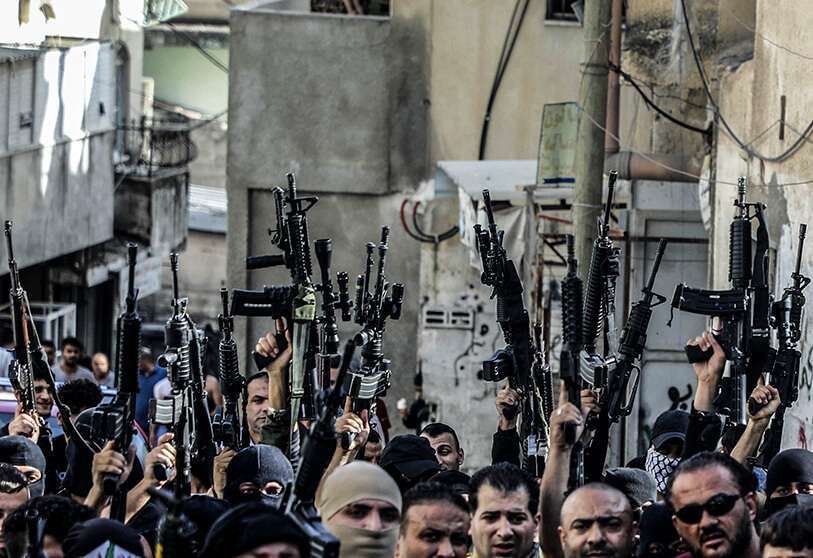
Fatah: Palestinian political-military organisation founded in 1958 in Kuwait by Yasser Arafat. It is a major component of the Palestine Liberation Organisation (PLO), which was created in 1964, and is a consultative member of the Socialist International, created in 1951.
The name is an Arabic acronym for "National Movement for the Liberation of Palestine".
It has also sometimes been referred to as the Abu Nidal Organisation.
The group has undergone several splits and especially after the Munich bombings tried to dissociate itself from the more violent branches of the PLO.
Independent groups born under the umbrella of Fatah, such as the Al-Aqsa Martyrs Brigades, have perpetrated several attacks since the Second Intifada and are still active today.
A clear example of the differences within the organisation is that Hamas expelled Fatah from the Gaza Strip in 2007.
Hamas: Arabic acronym for the Islamic Resistance Movement. It is a Palestinian organisation that claims to be jihadist, nationalist and Islamist. Its original goal, as defined in its founding charter, was the establishment of an Islamic state in the historic region of Palestine, comprising present-day Israel, the West Bank and the Gaza Strip, with Jerusalem as its capital. However, in 2017 it issued a new principles document calling for "the establishment of a fully sovereign and independent state of Palestine, with Jerusalem as its capital within the borders of 4 June 1967", emphasising its nationalist over religious character, although it still does not recognise Israel or abandon the armed struggle.
It has a number of dependent organisations active in a wide variety of fields, ranging from cultural and religious assimilation of young people through madrassas to social assistance to the neediest Palestinians.
It has an armed wing, the Ezzeldin Al-Qassam Brigades. However, the entire conglomerate comprising the organisation is classified as terrorist.
Israel initially aided the creation of Hamas, thereby seeking to weaken Yasser Arafat's hitherto hegemonic PLO. However, from its formal creation in 1987 to the present day, the various organisations that make up Hamas have become priority targets of Israeli military operations.
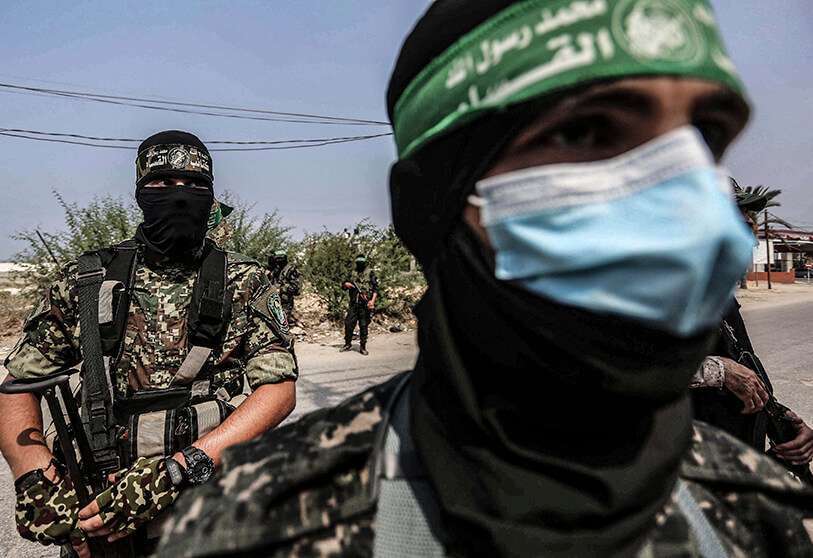
Hezbollah: 'Party of God'. Lebanese Shi'a Muslim Islamic organisation with a political and a paramilitary wing. It was founded in Lebanon in 1982 in response to the Israeli intervention at the time and was trained, organised and funded by a contingent of the Iranian Revolutionary Guard.
Hezbollah has received arms, training and financial support from Iran since its founding, and has operated with Syria's blessing since the end of the Lebanese Civil War.
The way Iran showed its military support for Syrian President Bashar al-Assad against the rebels was by sending Hezbollah militiamen to fight alongside Syrian soldiers. This is the clearest example of the use of terrorism as a diplomatic or foreign policy tool.
Hasan Nasrallah is the top leader of Hezbollah.
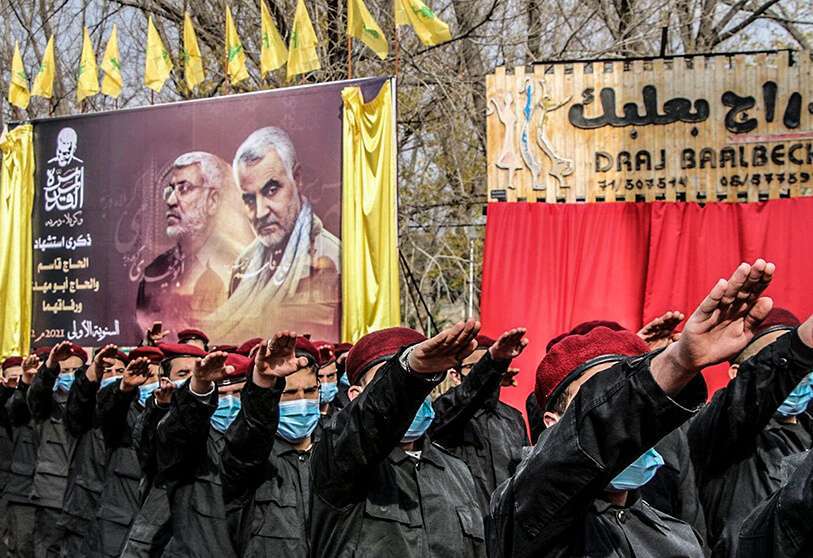
In terms of its ideology, it is a particularly curious case due to its evolution: in 1985 it published its first manifesto describing its ideology and objectives, among which it advocated the establishment of an Islamic Republic in Lebanon.
This objective, however, was redefined in its second manifesto in 2009, in which, in addition to omitting any reference to the establishment of an Islamic order in the country, it set as its goal the establishment of a secular, majority democracy.
As already mentioned, the terrorist phenomenon is almost as old as civilisation, although it was born as such at the end of the 19th century and reached its peak in the 20th century, following the evolution described above.
In the current situation, terrorism with a political origin or purpose is somewhat testimonial, as that corresponding to the so-called "Fourth Wave" or religious terrorism is the one that has increasingly taken centre stage, as has also been mentioned, mixing and confusing with the activities of groups dedicated to organised and transnational crime.
However, in recent years, and especially aggravated by the COVID-19 pandemic that is ravaging the world, a political and social polarisation is taking place that gives us a glimpse of a worrying future, offering us more than plausible indications that the emergence of a new wave in which politically motivated armed groups re-emerge or reappear is something that crosses the threshold of what should not be "ruled out".










